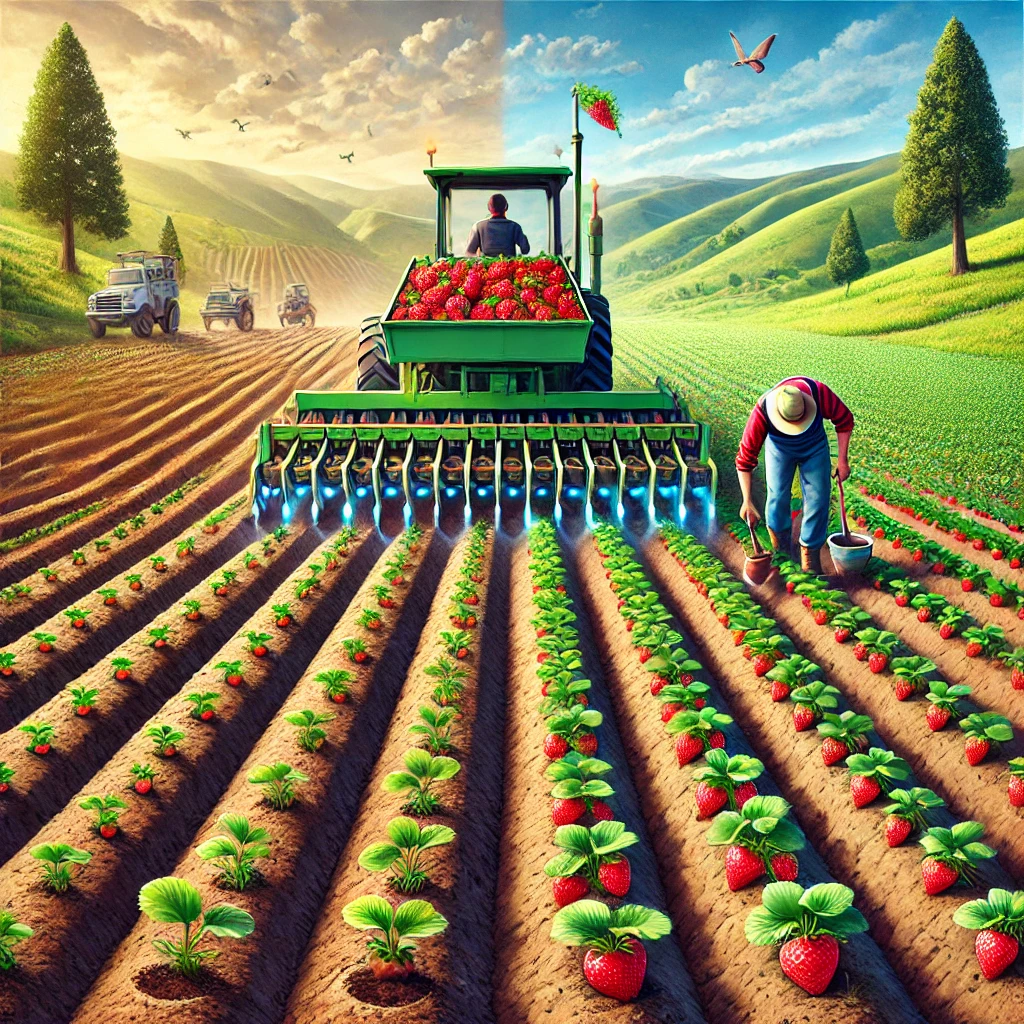California Strawberry Farming: Cultivation and Harvesting Process
| Section | Details |
|---|---|
| Introduction | Overview of California’s strawberry farming industry. |
| Seedling Preparation | Selecting the healthiest roots for planting. |
| Soil Preparation | Techniques for optimizing soil for planting. |
| Planting Process | Traditional vs. modern planting methods. |
| Watering and Pollination | Advanced irrigation and the role of honeybees. |
| Harvesting | Worker efforts, tools, and economic contributions. |
| Packing and Shipping | Sorting, packaging, and transportation steps. |
| Industry Statistics | Production figures, revenue, and growth trends. |
| Conclusion | Summary and future outlook of strawberry farming. |
California Strawberry Farming: Cultivation and Harvesting Process
Introduction
California is the heart of the U.S. strawberry industry, producing an impressive 92% of the nation’s strawberries as of 2023. With 37,000 acres dedicated to strawberry farming, the state combines traditional agricultural expertise with cutting-edge technology to produce over 1.15 million tons annually. From seedling selection to distribution, California’s strawberry farming is a remarkable example of innovation and hard work.

Seedling Preparation
The journey of a California strawberry begins in the seedling preparation area. Here, experienced farmers meticulously select the healthiest roots. This step is crucial for ensuring vigorous growth and high productivity. By focusing on the quality of the seedlings, farmers set the stage for a successful harvest.

Soil Preparation
To maximize strawberry yield, farmers prepare the soil with precision. Raised beds are carefully constructed to ensure proper drainage and aeration. Fertilization and pH adjustments are made based on soil tests, creating the ideal environment for strawberry plants to thrive.

Planting Process
Planting in California is a blend of tradition and modernity. While some farmers continue with traditional methods, others use advanced machinery to automate planting. These machines dig optimal holes and space seedlings uniformly, significantly reducing labor costs while enhancing precision.

Watering and Pollination
Strawberry plants demand consistent watering, requiring about two inches of water daily during fruiting. Advanced irrigation systems ensure even hydration, while honeybees are brought in during bloom to facilitate essential pollination. These bees play a vital role, transforming flowers into ripe, juicy strawberries.

Harvesting
Each year, around 55,000 workers, primarily from Mexico, converge on California’s strawberry farms during the harvest season. These skilled workers earn wages based on the volume of strawberries they pick, averaging $15 per hour. Using baskets and delicate tools, they ensure that strawberries are picked without bruising.

Packing and Shipping
After harvesting, strawberries are transported to nearby facilities where they are sorted, cleaned, and packaged. The swift transition from field to facility ensures freshness. Once packed, strawberries are distributed nationwide, reaching consumers in pristine condition.

Industry Statistics
California’s strawberry industry is a powerhouse, generating $2.3 billion annually. Despite challenges such as unpredictable weather, advancements in farming techniques and resilient crop varieties have sustained growth. Early 2024 forecasts indicate continued expansion of this thriving sector.

Conclusion
California’s strawberry farming is a testament to the synergy between traditional farming practices and modern technology. As the industry grows, it remains a cornerstone of the state’s agricultural economy, providing consumers with fresh strawberries year-round.


